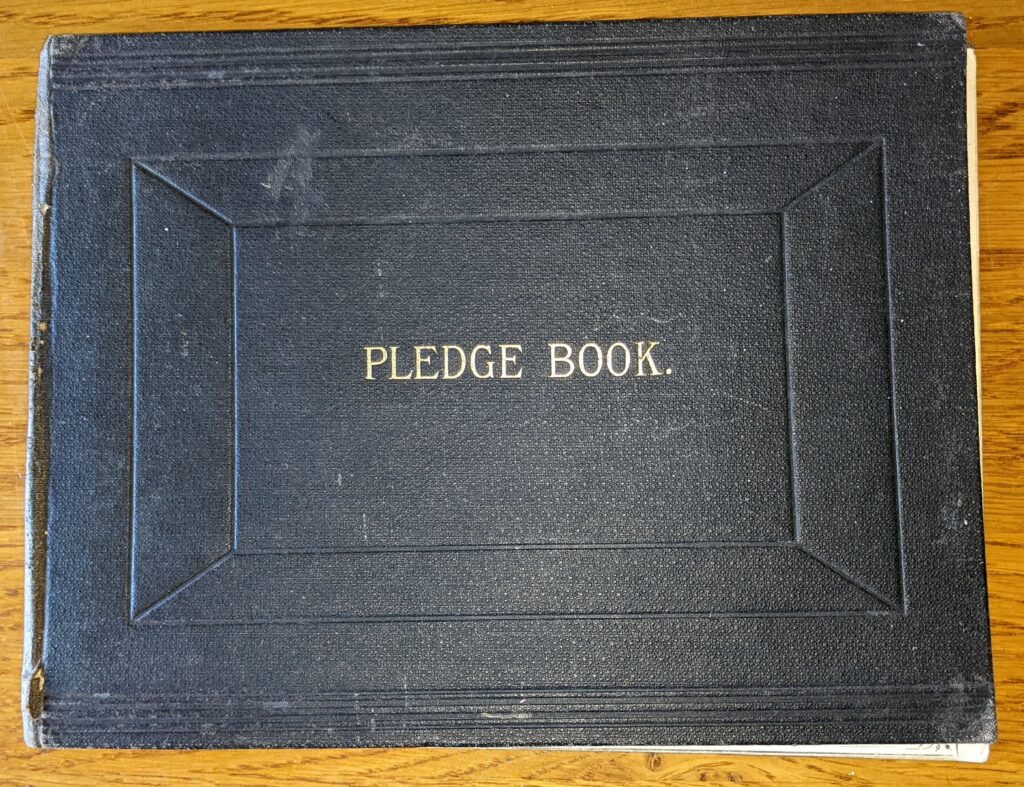
The Pledge Book above is from Handsacre Primitive Methodists and I would first like to thank Gifford Foote for allowing me access to their historical records and for his encouragement in my research on the village.
The temperance movement in the UK was a social movement that campaigned against the recreational use and sale of alcohol and societies began to be formed in the 1830s. Ideally the members wanted to completely ban alcohol as their American counterparts did with the Prohibition Acts of the 1920s but they didn’t achieve the same degree of success in the UK.
Specific groups were created at different times to target different aspects of drinking and in 1847 the Band of Hope was created to persuade children not to start drinking alcohol. Temperance was strongly supported by some religious groups particularly Noncomformist Churches. Handsacre’s Primitive Methodists was no exception and some of their surviving documentation for their Band of Hope group is shown here. Armitage Church also had a Band of Hope group but if there was any documentation it certainly hasn’t come to light yet.

The Primitive Methodists’ Pledge Book begins in 1908 rather than some time in the late 1800s and is therefore likely to be a restart of a Band of Hope. It starts with instructions as to admissions and it states that the book is only intended for the signatures of adults and young people over 14 years of age. It’s a few pages before anyone older that 14 is there and the youngest age given is 7. One of the reasons given in the book instructions for not wanting young children to sign the actual pledge book is that ‘young people seldom write very neatly, and a whole page may be disfigured’. This can be seen here but there are also some extremely neat signatures.
The first page shows that it is from a meeting on Wednesday 8th April 1908 with member number 1 being 9-year-old Annie Dawson of Old Road. Her father was George Dawson, a very devout Methodist. The other 5 signatures from that first meeting are Gerty Conway (12), Harry Wright (13), David Johnson (11), Edwin Carthy (12) and John Alldritt (10). Six years later the Great War started and each of the four boys went off to fight for their country but only two returned – John Alldritt and Edwin Carthy were both killed.
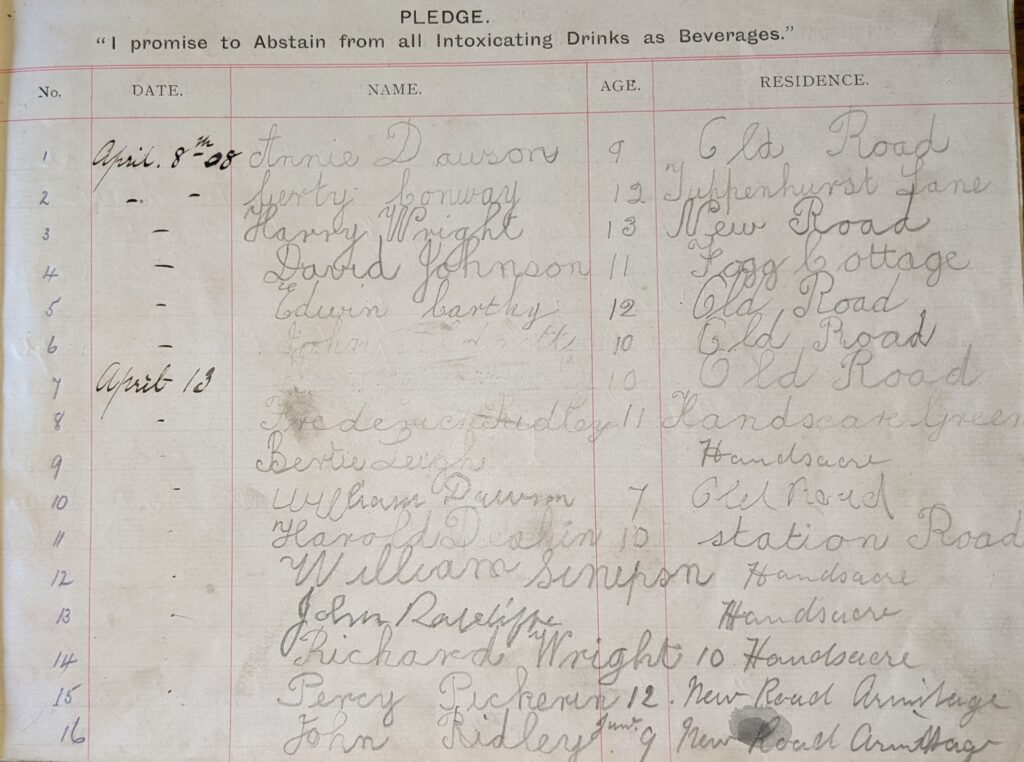
Less than a week later another 22 children signed the pledge and old village surnames are quite prominent – Carthy, Conway, Dawson, Deakin, Johnson, Leigh, Ratcliffe, Ridley, Rosson, Simpson and Wright. These were aged between 7 and 12 and most if not all of the boys would also have fought in the war.
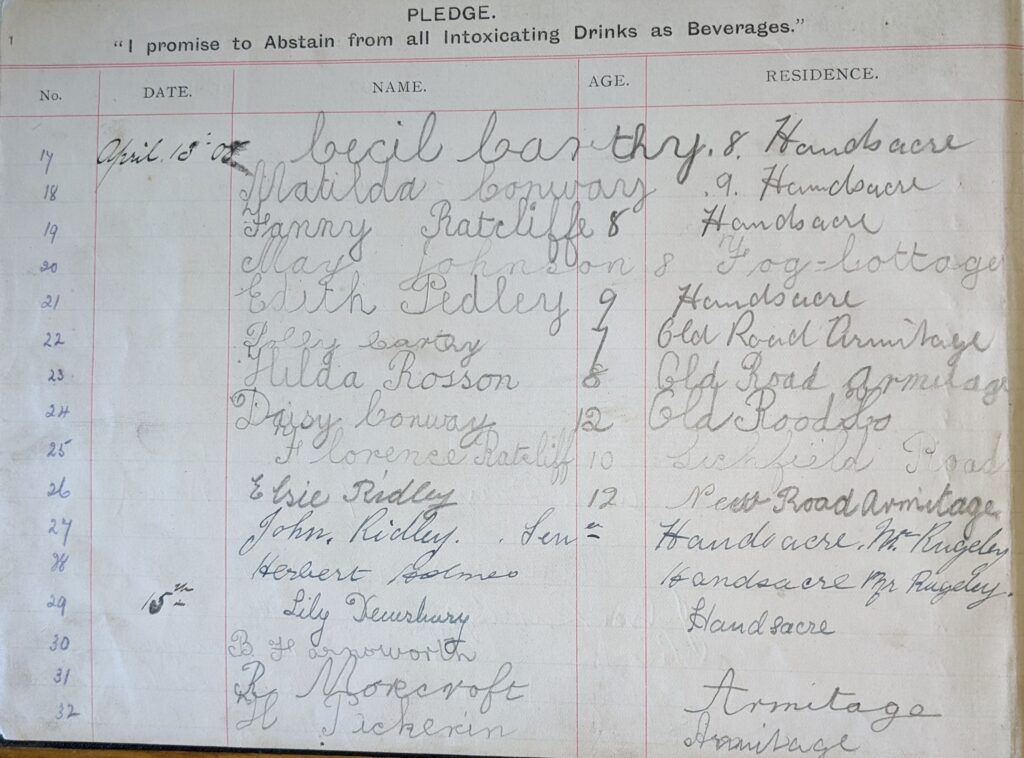
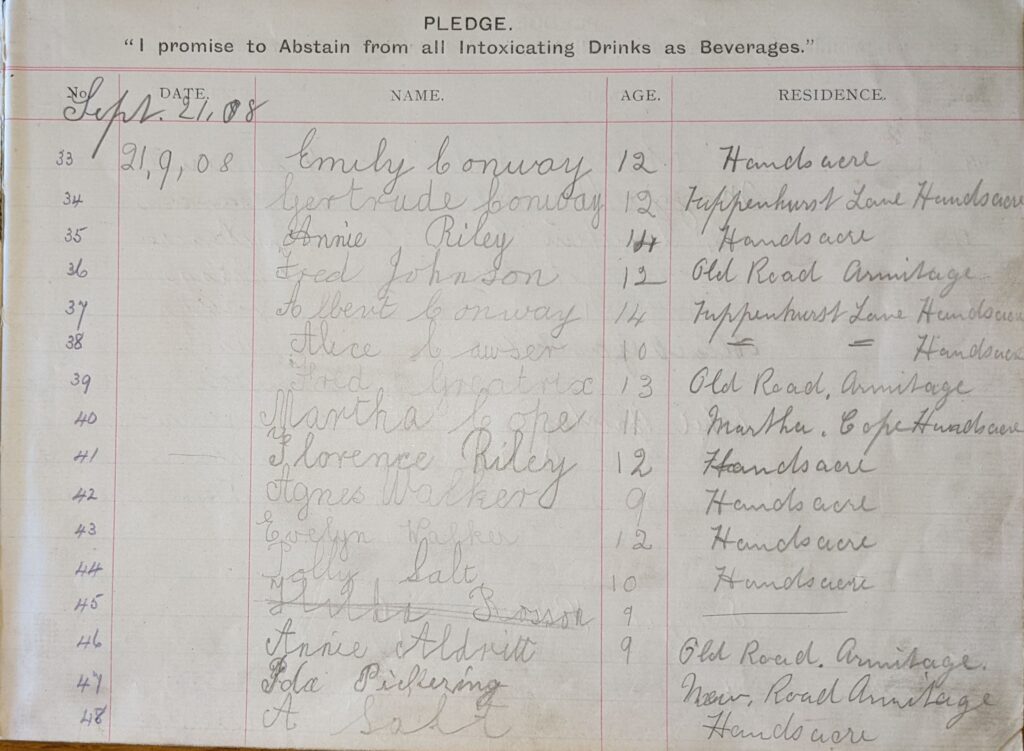
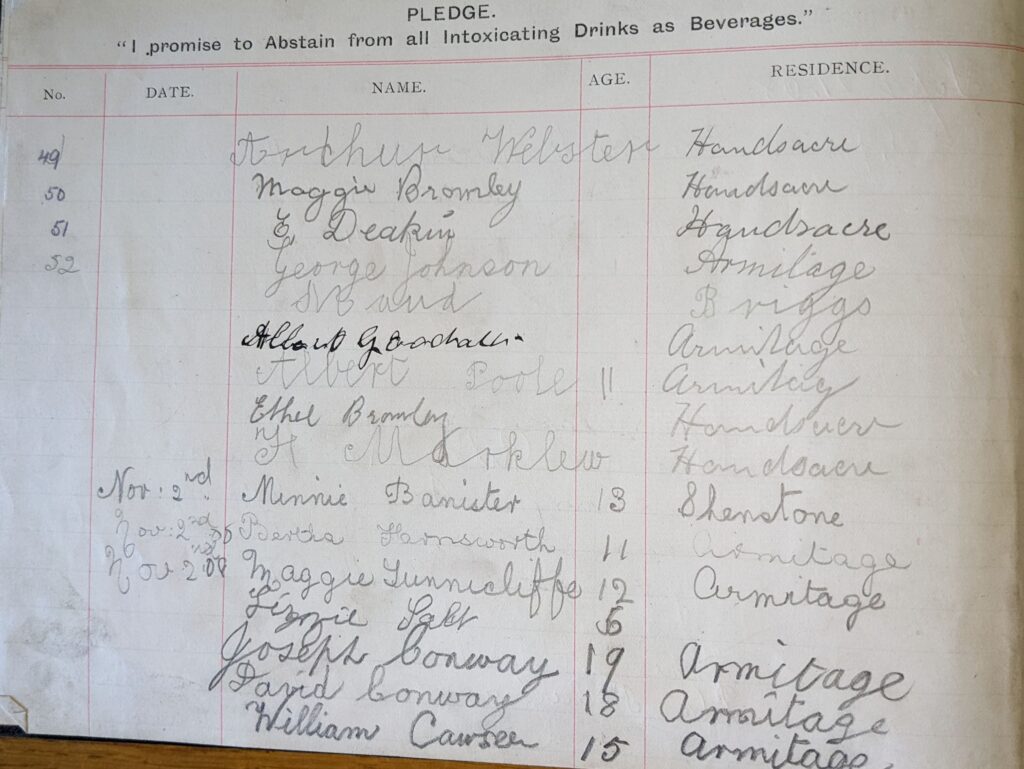
Aristotle apparently said “Give me a child until he is 7 and I will show you the man” and this was repeated by Ignatius Loyola, founder of the Jesuit order. If they were right, then the children will have already been moulded by their family. But even if the family was completely teetotal then harsh experiences in the trenches of the Great War would surely have had an enormous impact and perhaps overcome their family values.
About most of the children (and their subsequent families) whose signatures appear in this pledge book I have little personal knowledge. I do know a bit about number 10 on the list though – William (Bill) Dawson who went on to marry Winnifred Rosson. Bill was brother to Annie who was the first signature and he had an older brother George, (who married my Great Aunt, Alice Grimley). Bill did not join the army but went to work at the pottery where he became foreman of the warehouse and eventually completed 52 years service before retiring at the age of 65 and working part-time as a security guard at Barclays Bank in Armitage. Bill remained a teetotaller for the whole of his life. His older brother George was perhaps ‘too old’ to sign the pledge but he too remained a teetotaller and he did fight through the war. The Dawson family devotion to the cause obviously counted for a lot.
Following on from the signatures shown above the pledge book becomes a register for attending Band of Hope sessions rather than a book for children to sign. These next few pages, shown below, are from some years later but no date is actually given – it is from some time between 1909 and 1912. At about 80 boys and 80 girls it is an impressive list given that at the time there were only about 270 children aged between 7 and 14 in the Parish. The entries continue through to 1919 although the numbers are smaller and then there is a gap to the final two pages dated 1930 where there are only 10 girls and 8 boys. Elsewhere in the UK the movement carried on for a while and eventually became Hope UK, a charity which educates children and young people about drug and alcohol abuse.
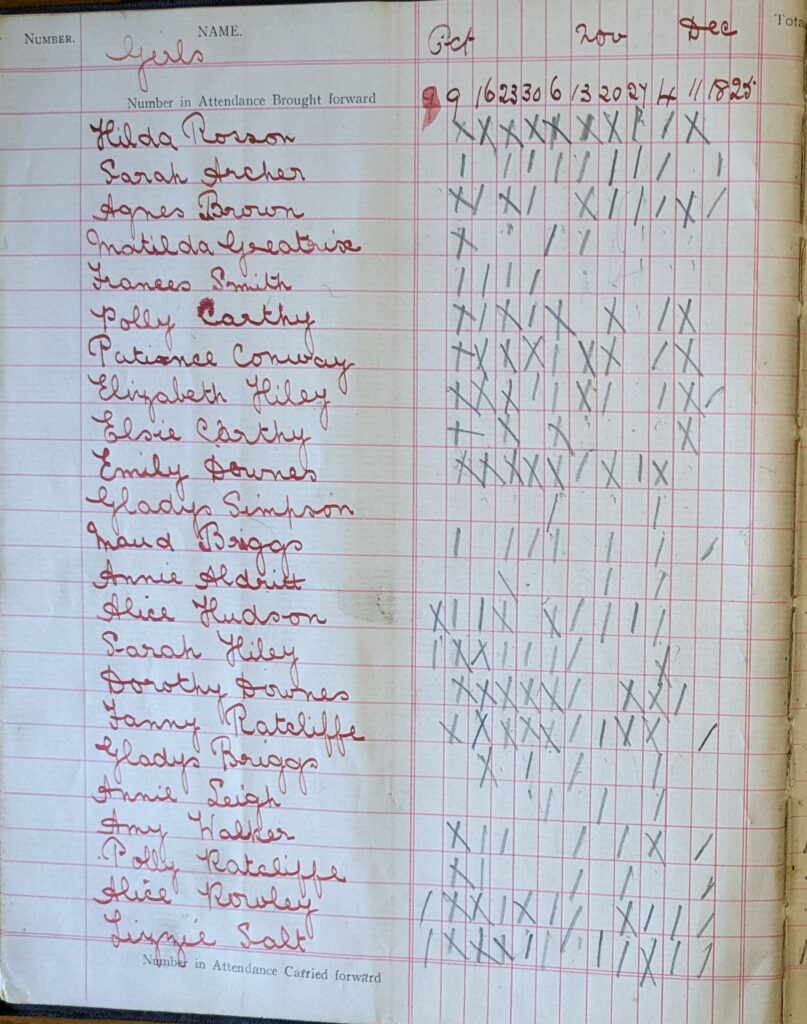

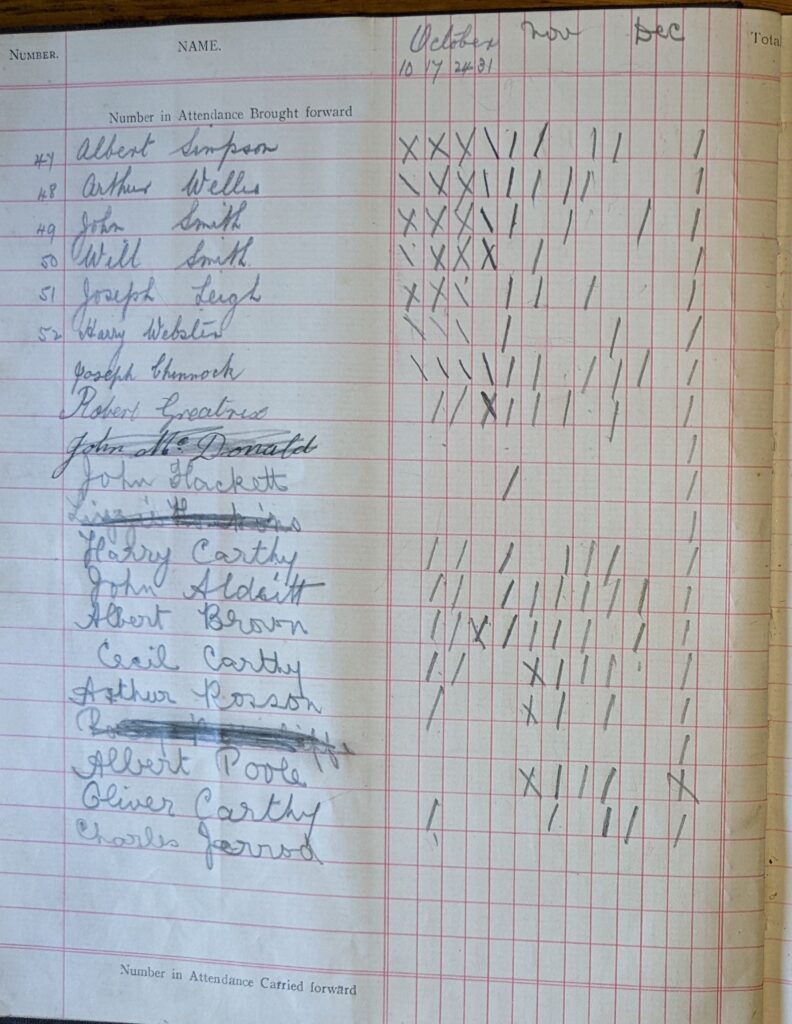


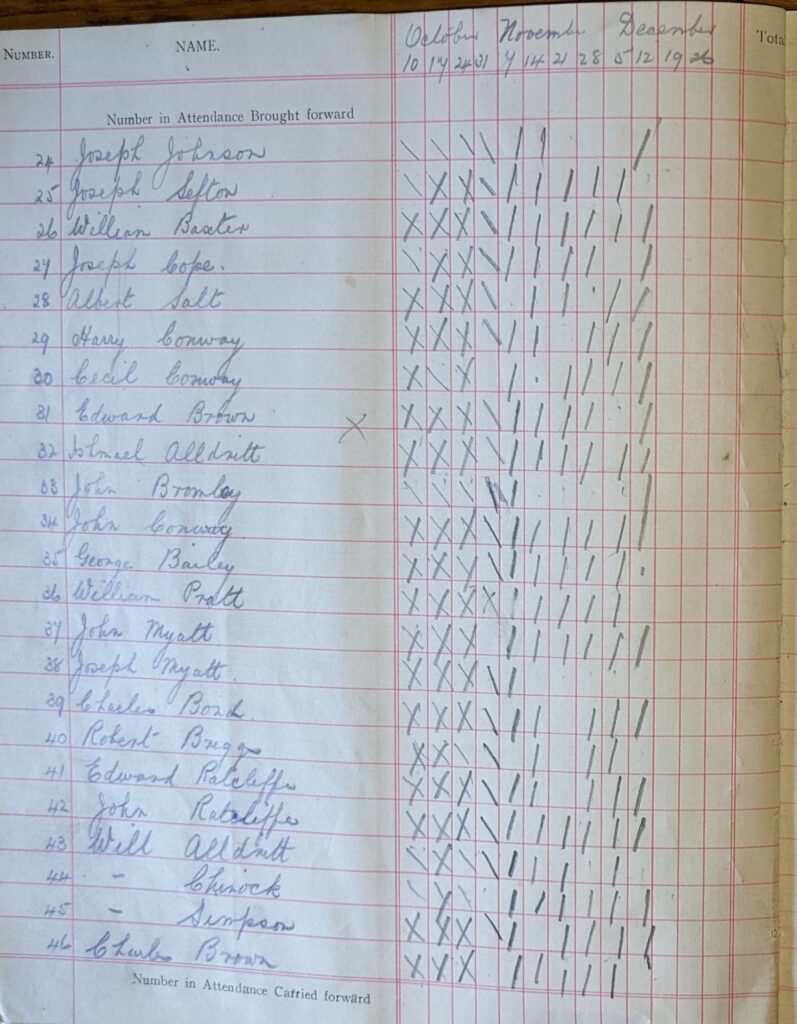
St. John the Baptist Church in Armitage didn’t leave any documentation but there are snippets of information in different sources. Their anti-alcohol approach was lead by the Church of England Temperance Society which often appears in newspapers as C.E.T.S. The December 1893 Parish Magazine states that their Band of Hope meetings were held every Wednesday in term time at 6pm but no numbers or names are given. In the same magazine it was stated that monthly adult temperance meetings had started in October 1893.
By 1899 the adult meetings had fizzled out and an attempt was made to restart them by forming a joint group with Pipe Ridware – the Armitage and Pipe Ridware Temperance Guild. Not many turned up however and the report in the Parish Magazine stated ‘ perhaps it was hardly realised that meeings had recommenced’.
Their Band of Hope though was still going in 1899 and had over 30 members and at meetings the children provided their own entertainment consisting of songs and recitations. It seems likely that the Band of Hope and the Sunday School membership would be similar – the photo below from the July 1895 Parish Magazine gives an idea of the membership.
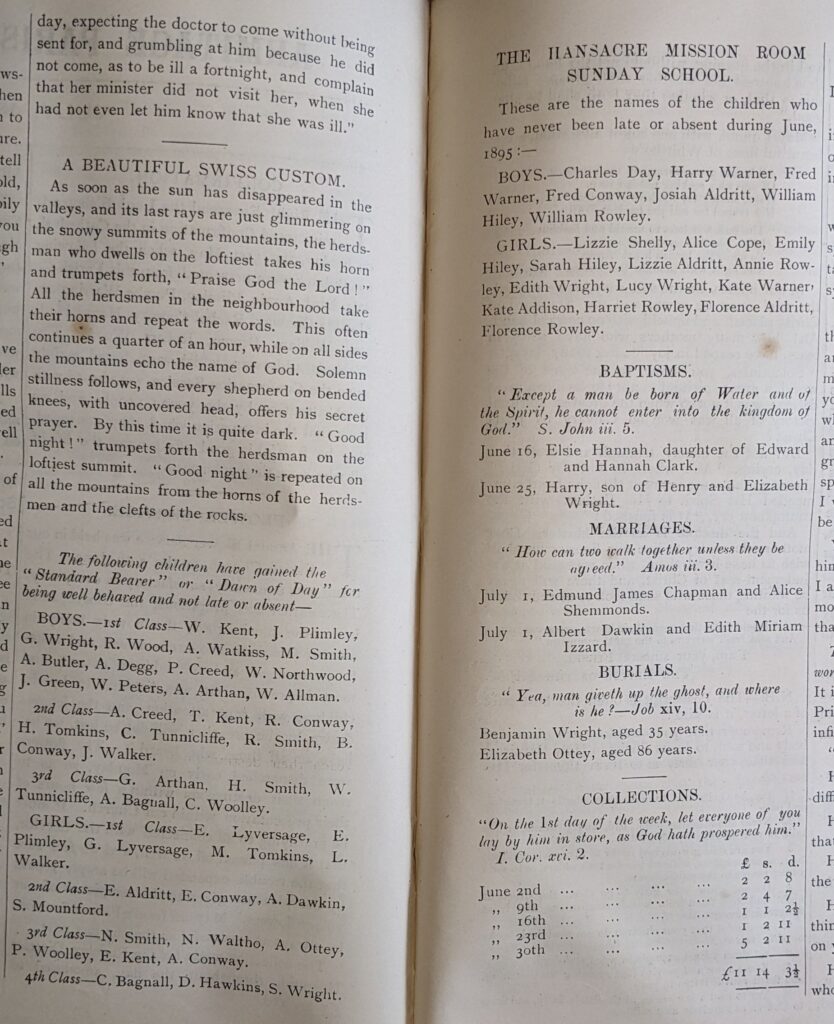
If you have information on any of the names mentioned or indeed about the Band of Hope please do leave a comment.
